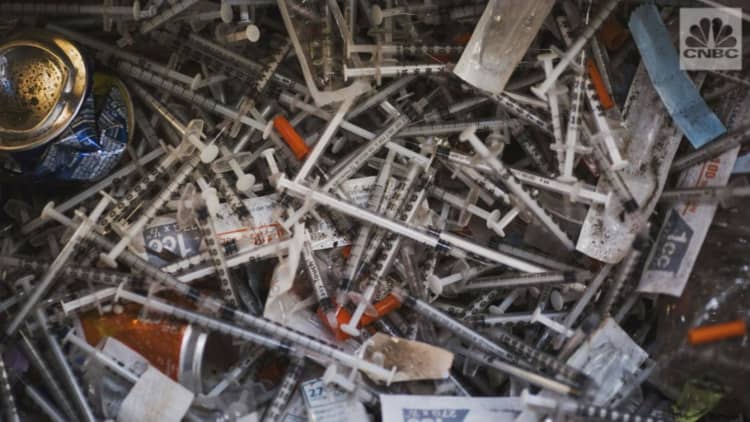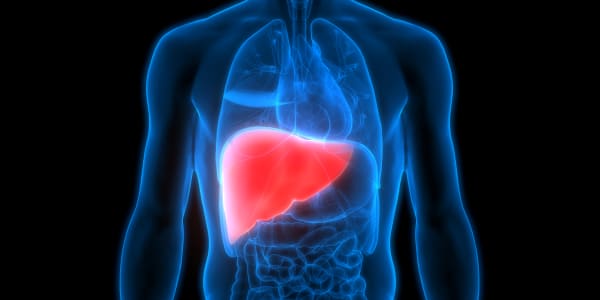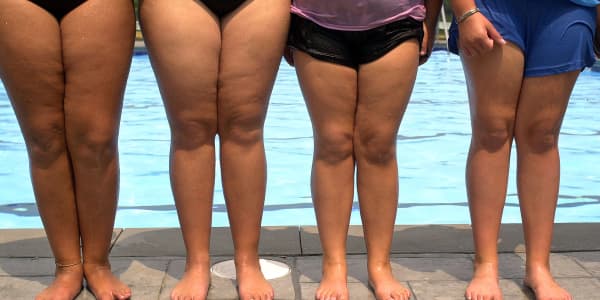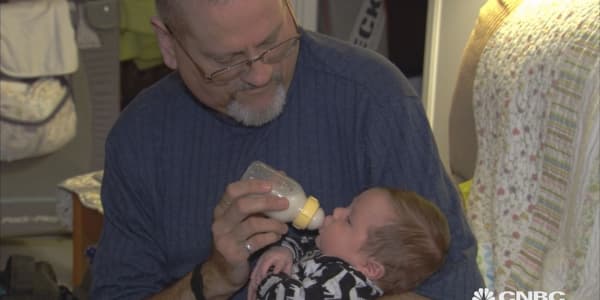
What happened the last time you were prescribed an opioid? If you're like most people, you didn't finish them — and didn't dispose of them — in effect, making you a potential source of illicit drugs and addiction that has been exploding across America.
This rogue supply of painkiller is alarming, given the latest data on addiction deaths: Even after years of heightened attention from politicians and the press to the nationwide opioid epidemic, 2016 saw an increase in overdose deaths of 21 percent, with rates of synthetic-opioid deaths doubling, according to the Centers for Disease Control and Prevention.
"There are around 200 million opioid scripts a year. ... It's an extraordinary reserve," said Keith Humphreys, a professor of psychiatry and behavioral sciences at Stanford University who worked on drug policy for the Obama administration. "That's just as many scripts as there are adults; it's such a huge reservoir to tap. ... Lots of people just don't think about it," Humphreys said.
As many as 92 percent of patients don't finish their painkillers, and less than 10 percent dispose of them properly — either flushing them down the toilet or returning them to a hospital, pharmacy or law enforcement, according to a new study published in the journal JAMA Surgery.
"For almost every injury we looked at, patients had pills they didn't use," said Johns Hopkins pain-management specialist Mark Bicket, who led the study. "They become a source for illicit use. Other adults use them, and children and adolescents can find them when they're exploring," he said.
At least two-thirds of a total of 810 patients didn't use their entire opioid prescription but kept the unused pills, according to the data Johns Hopkins studied, and roughly 75 percent of patients ignore warnings to keep opioids in a locked cabinet.
"If it was only one or two pills, it would be one thing," Bicket said. "But most patients have more than 10 — almost the entire prescription — just lying around." He said many patients hoard the drugs, not to get high but so they can react to a relapse of pain or some new injury without seeing a doctor again.
Many patients stop taking pills because their pain has receded, according to between 42 percent and 71 percent of those studied. A smaller group of patients stopped taking the pills because of side effects.
Either way, leaving the pills around the home leads to abuse. "Some teenage kids want to experiment, but a teenager can also be entrepreneurial," Humphreys said. "You can sell a 20-milligram OxyContin pill for $20 on the street." He added that other threats are beyond a family's ability to foresee: There have been cases where visitors to a real estate open house clean out pill cabinets.
Opioids account for 2 million people with a substance-abuse problem, according to the American Society of Addiction Medicine. Most people with opioid problems began by using pills they were prescribed as pain relievers, but more recent twists in the epidemic include a resurgence of heroin addiction and abuse of fentanyl, the drug that singer Prince overdosed on last year.
Drug overdoses in 2016 killed more than 64,000 Americans, with the largest numbers coming from people who abuse prescription pills such as oxycodone or hydrocodone, whose brand-name versions are OxyContin and Vicodin. More recently, the growth in overdose deaths has come mostly from fentanyl and heroin, the CDC data shows.
Give away your painkillers — to the right people
The simplest thing patients can do to dispose of prescription drugs properly is to simply flush them down the toilet, Bicket said. Patients are right to fear doing environmental damage by flushing — the Drug Enforcement Administration has stated it can affect the water supply — but it's still a better option than leaving unused pills around the house.
"It's a trade-off of risks," Humphreys said. "I think the candid answer a DEA official would give you is that flushing down the toilet isn't good, because it's not good to throw toxic chemicals into the water supply, but flushing, although bad, is less bad than hoarding."
The National Drug Prescription Take Back Day — created by the Justice Department and Drug Enforcement Administration as a way to get unused prescription drugs out of the public supply — is another option and is conducted twice annually. The next Take Back Day will be on Oct. 28 (as of Oct. 1 the Justice/DEA site will list collection locations). There were more than 5,400 collection sites across the country last April and 450 tons of prescription drugs collected.
If you look at American opioid prescribing, which is off the charts, if you reduced it by 75 percent, we would still be among the list of top nations.Keith HumphreysStanford University professor
Initially focused on law-enforcement location drop-off, the Obama administration expanded the program in late 2014, giving pharmacies, hospitals, clinics and other "authorized collectors" the ability to take back drugs. CVS, among other companies, now offers customers the ability to drop off unused prescriptions. Patients and their family members can also mail their prescription controlled substances to an authorized collector using prepaid mail-back packages that can be obtained at a pharmacy, or from other locations, like libraries and community centers.
If drop-off is not an option, the DEA recommends preparing unused drugs for disposal by mixing with coffee grounds or used cat litter, sealing them and then throwing them in the garbage.
Humphreys said these efforts work — to a point. "I remember I was in Russell, Arkansas, for a Take Back day, and in three hours in front of a Wal-Mart, we got more pills than there were people in the town." But he added that Take Back Days are for all pills — not just controlled substances — and many people bring in vitamins and "Grandma's liver pills." He also said the National Take Back Days are designed as "special occasions" and, as such, can never be a complete solution. "We need to force it into a cultural habit so it is not a special event."
Even year-round drop-off at select sites lacks a key component: incentive. Humphreys said the best suggestion he has heard recently about getting unused prescription painkillers off the market is to create a recycling program that includes a financial reward. "People return bottles because of the deposit."
More from Modern Medicine:
A new source of addiction is seducing millions: the Internet
Marijuana's role in Alzheimer's research hits federal roadblock
The battle over drug pricing hits America's No. 1 killer
The Johns Hopkins study doesn't limit culpability to patients. Analyzing data from six previous opioid studies, Bicket found that doctors are failing to keep tabs on where all those pills go. "Surgeons may not be aware of the magnitude of the problem," Bicket said.
Doctors and patients are changing how they work with opioids but need to do more. The simplest solution is to not prescribe addictive painkillers: Over-the-counter painkillers, like Tylenol and Advil (acetaminophen and ibuprofen), can be more effective than many patients think, especially when used in tandem, Bicket said. Alternating between the two can enable a patient take more, with a low risk of toxic reaction than if the same patient used more than the recommended dosage of either one.
US Senators speak out
States and the federal government are moving to cut off the flow of unused opiates onto the black market. Massachusetts and Maryland are considering laws to limit the number of pills that can be prescribed at one time, and the federal government last year passed the Reducing Unused Medications Act, which gives doctors or patients the right to direct that a prescription for opioids be dispensed in several separate lots. That way, the patient will return to the pharmacy for more pills only if they are still in pain.
"It is critical to limit the number of pills that travel home from the pharmacy in the first place ... in the absence of greater reforms, encouraging prescribers to embrace the partial fill option for their patients can help to reduce the number of opioids left over in homes across the country," Democratic Sen. Elizabeth Warren of Massachusetts and Republican Sen. Shelley Moore Capito of West Virginia wrote in a letter to the nation's governors this month, urging them to promote the law in their home states. "Educating health care professionals about various methods to limit overprescribing, as well as simple policy tools like partial fill and safe disposal of unused medications, are all critical ways to address the opioid epidemic," they added.

Longer-term strategies could include developing versions of pain drugs that lose their effectiveness after a few months, or adding ways to make the drugs ineffective if they are taken improperly, Bicket said. Neither is ready for the market yet, but "multiple companies and labs are working on that right now.''
Humphreys said many ideas have been tried over the years, such as putting a shell on a painkiller so if it is crushed for inhalation, the opiate becomes inert; or putting a strong coating on the pill so it makes accessing the opioid difficult. But he said these efforts have limited ability to turn the tide. "As soon as they [the new drugs] come out, there are internet chat rooms where people say, 'Here is what you do. ... It's an arms race." There are also boxes that have been designed to only release one opioid every 12 hours, or only dispense when a code is entered or fingerprint-scanned, and these work in some limited situations. "I'm from West Virginia and you worry about someone breaking into your trailer to steal your painkillers," Humphreys said.
But as someone who has worked for many years on the opioid epidemic, the Stanford professor isn't hopeful for any single, novel solution. There is only one way to beat addiction: less prescriptions. He said the medical students that he comes into contact with today are "far more cautious" about prescribing opioids than their mentors. Even as overdose deaths increased in 2016, the number of prescriptions fell between 2012 and 2015 for the first time in decades.
"If you look at American opioid prescribing, which is off the charts, if you reduced it by 75 percent, we would still be among the list of top nations," Humphreys said. He added that there is no known estimate for the rogue opioid supply but thinks the "off-book" supply of drugs has to be "massive." If the level of prescriptions doesn't keep coming down, "all this other stuff is at the margins," he said.
— By Tim Mullaney, special to CNBC.com




